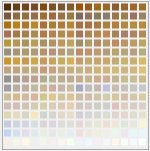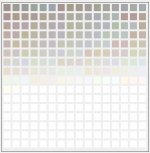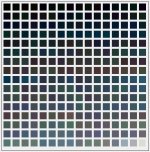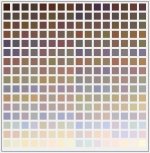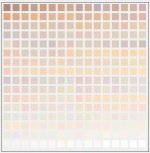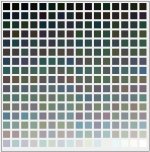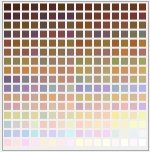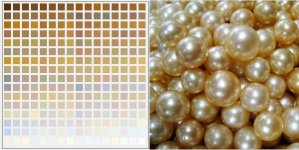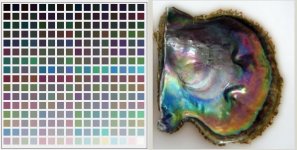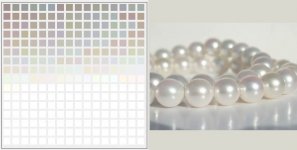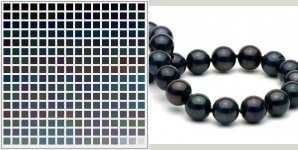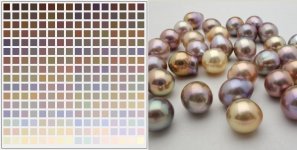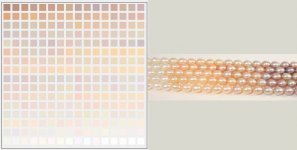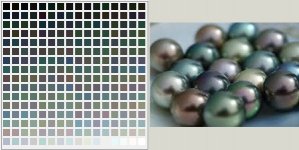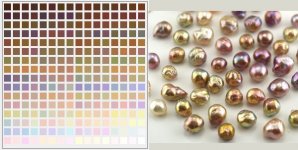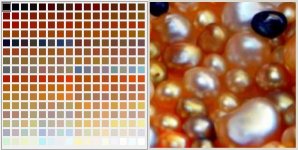Lagoon Island Pearls
Well-known member
- Joined
- Dec 8, 2009
- Messages
- 2,060
I have been working with color palettes as an aid to identification of pearls. In another thread a few weeks ago, I used this method to compare my pearls to a new member's collection.
I'll give a brief introduction to my methods then we'll put them to the test with a fun little quiz.
First we'll start with an image of pearls. I'll use some of my naturals. It's very important your image has the proper exposure. Balanced light and critical focus.
It's best to use an image of a group of pearls, afterall many pearls of the same species have subtle differences and we are seeking an overall representation.
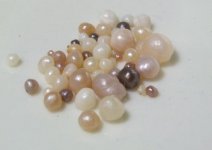
Next, using you paint program, open a new image. Using the rectangle select tool, cut and paste pieces to the new image. Avoid backgrounds, long shadows, other objects etc. You will end up with a mosaic looking something like this.
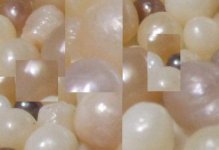
Then in your color menu, decrease color depth to 256.
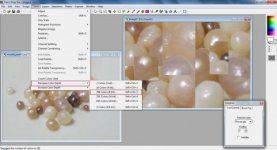
This will automatically generate a color palette. Select Edit Palette.
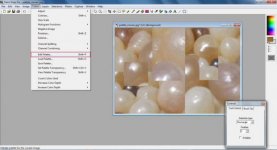
Pressing ALT + Print Screen will copy the window to the clipboard so you can paste it to a new image.
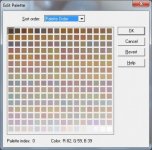
There are a few things to consider when we interpret this data. As you can see on the bottom line, there are white squares. Of course a pearl isn't perfectly white, but reflected light is. Although not a color, this helps us guage the luster of pearls. Likewise, no pearl is truly jet black, but darker colors in shadow are.
What we have left are colors that accurately represent the depth and overtones of this species of pearls. Different pearls have different color features, but they are clearly revealed and distinguished from one another.
Try it yourself! Use your personal pearls or images of your favorites.
I'll give a brief introduction to my methods then we'll put them to the test with a fun little quiz.
First we'll start with an image of pearls. I'll use some of my naturals. It's very important your image has the proper exposure. Balanced light and critical focus.
It's best to use an image of a group of pearls, afterall many pearls of the same species have subtle differences and we are seeking an overall representation.

Next, using you paint program, open a new image. Using the rectangle select tool, cut and paste pieces to the new image. Avoid backgrounds, long shadows, other objects etc. You will end up with a mosaic looking something like this.

Then in your color menu, decrease color depth to 256.

This will automatically generate a color palette. Select Edit Palette.

Pressing ALT + Print Screen will copy the window to the clipboard so you can paste it to a new image.

There are a few things to consider when we interpret this data. As you can see on the bottom line, there are white squares. Of course a pearl isn't perfectly white, but reflected light is. Although not a color, this helps us guage the luster of pearls. Likewise, no pearl is truly jet black, but darker colors in shadow are.
What we have left are colors that accurately represent the depth and overtones of this species of pearls. Different pearls have different color features, but they are clearly revealed and distinguished from one another.
Try it yourself! Use your personal pearls or images of your favorites.

